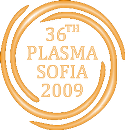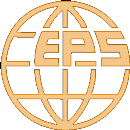36th EPS CONFERENCE ON PLASMA PHYSICS
INSTRUCTIONS FOR INVITED AUTHORS
Important notice!
Refereeing procedures for the invited papers from the EPS conference changed in 2008. Please read the following instructions carefully and take note of the deadlines!
As in previous years we will be publishing the invited talks in a special issue of Plasma Physics and Controlled Fusion
In 2009, IOP will once again manage the peer-review of the special issue. This means that:
- Manuscripts should be submitted electronically, directly to PPCF, rather than to the conference organisers.
- The manuscript submission deadline will be before the start of the conference, so that papers can be sent out to referees before the conference begins.
- Authors’ and referees’ main contact throughout the reviewing process will be with the PPCF editorial office, although the conference Scientific Secretary will still be involved in the process.
Due to the new procedures and the date of the conference the reviewing and publication schedule will be very tight this year. If authors do not meet their deadlines then their papers will not be included in the special issue
Initial submission
Articles must be submitted to PPCF by 19 June 2009. If articles are submitted after this date then we cannot guarantee that they will be considered for inclusion in the special issue. If it is possible for you to submit your article before 19 June then please do so – this will enable PPCF to begin processing your paper ahead of the main bulk of submissions.
Articles must be submitted electronically. The preferred method is via IOP’s web submission form at http://authors.iop.org/submit, although we can also accept files via FTP, or through email (to ppcf@iop.org). Please see the attached manuscript preparation guidelines for information on how to prepare and submit your article.
It is very important that you clearly indicate that your submission is for the EPS 2009 special issue of PPCF
Please note that the page limits are 12 journal pages for plenary invited papers and 8 journal pages for parallel invited papers. Papers that exceed these page limits by 1-3 pages will be charged 100 Euros per excess page. Papers that exceed the page limits by more than 3 pages will not be considered for the special issue.
Review
Once submitted, your paper will enter PPCF’s electronic refereeing system. Articles will be refereed to the journal’s usual high standards, and you may be asked to make amendments or revisions to your paper. The final acceptance deadline for all special issue papers is 25 September 2009.
The deadlines for this special issue are extremely tight, so it is very important that you stick to your deadlines if you are asked to amend or revise your paper. As standard PPCF refereeing procedures will be followed you may be asked to make substantial revisions to your paper.
It is important that we are able to get in contact with you over the summer. Therefore you should tell us on submission if there will be any dates when you will be unavailable, and if possible you should nominate a co-author who we can contact in your absence.
Article Publication
The final date for articles to be accepted for the special issue is 25 September 2009. Any articles not accepted by this date may not be included in the special issue, but may be considered for publication in a later issue of PPCF.
Please note that because of the tight schedule, authors will be given very short deadlines during the proof stage, i.e. they are likely to be given just 24 hours to make proof corrections.
Summary of deadlines:
| Initial submission: | 19 June 2009 |
| Final article to be accepted for publication: | 25 September 2009 |
| Publication: | December 2009 |
Manuscript preparation
Articles should be a maximum of 12 journal pages in length for a plenary invited paper, and a maximum of 8 journal pages in length for a parallel invited one. To work out the equivalent word count allow 600 words per page, with all figures and tables occupying the equivalent of 300 words.
Please note that PPCF is a ‘B5’ size journal, which only allows for approximately 600 words per page. This is less than for ‘A4’ or ‘US letter’ size journals.
For example, a 12 page manuscript with 4 figures would work out as follows:
9 pages of text at 600 words per printed page = 5400
2 pages with total of 4 figures = 1200
1 page for abstract and references (short reference list (about 15) – you would need to allow more for longer reference lists) = 600
Total equivalent number of words = 7200
Please note that for papers exceeding the maximum length by 1-3 pages in their final version, a production excess charge of 100 Euros per page will be billed to the author. If the final version exceeds the limit by more than 3 pages, it will not be eligible for the conference Special Issue, but the paper will be automatically submitted to PPCF as a normal paper, to be refereed by the standard PPCF procedures.
The paper will also be automatically changed to a normal paper, to be considered for publication in a later issue of PPCF, in the case that agreement with the referees has not been reached by the 25 September 2009 deadline.
File preparation
The guidelines below provide the essential information you need to prepare your article in the most useful form.
- Text formats
TeX and LaTeX: The text of articles may be submitted in any common variant of TeX including plain TeX, LaTeX 2e, REVTeX, AmSTeX and AmSLaTeX.
Guidelines and a class file for preparing articles using LaTeX 2e are available at authors.iop.org. Separate files are available for Windows, Unix and Macintosh. The individual uncompressed files can be found in the directories /pub/journals/latex2e.
We have copies of the common package and class files, and these should not normally need to be sent. If, however, you are using uncommon, customized or personal style files then these should be included along with your submission.
Microsoft Word: We are also able to receive articles prepared using Microsoft Word for Windows or Macintosh.
- Fonts should be restricted to the standard font families (Times, Helvetica, Courier or Symbol).
- If special sybmols are needed (eg. Greek Characters, accented characters or mathematical symbols) these should be typed using the appropriate TrueType font. Do not use the ‘Symbol’ facility on the ‘Insert’ menu as this often results in font conversion problems.
- Equations must be prepared using Microsoft Word Equation Editor version or the full commercial MathType package.
Full details and a sample article prepared in Word can be found at authors.iop.org.
Please note that figures included in a Word document should also be provided separately in a suitable electronic format (see the section Figure formats below).
- Figure formats
Our preferred graphics format is vector Encapsulated PostScript (EPS). These files can be used directly to give high quality results and file sizes are small in comparison with most bitmap forms. Most graphics software has the facility to save or export as EPS.
Vector formats: In order to get the best possible results, please note the following important points:
- Fonts used should be restricted to the standard font families (Times, Helvetica, Courier or Symbol).
- If vector EPS files include bitmap information, the bitmap should conform to the specification given in the section on bitmap formats below.
- Certain proprietary vector graphics formats such as Origin, Kaleidagraph, Cricket Graph and Gnu Plot should not be sent in their native format. If you do use these applications to create your illustrations then please export them to EPS.
Bitmap formats: Unlike vector images, which are readily scaleable, bitmap images frequently present quality problems in the production of printed and electronic versions of our journals. Quality is basically dependent on two attributes of a bitmap graphics file: resolution and size (bitmap dimensions in pixels). Low-resolution files do not reproduce well, especially when enlarged. Files with small bitmap dimensions are frequently too small to reproduce well at the resolution required for printing and suffer an unacceptable reduction in quality if enlarged. For these reasons, black and white, greyscale and colour bitmap graphics files should have a resolution of at least 300 dpi (preferably 600 dpi for black and white bitmap graphics files). In addition, the bitmap dimensions should be sufficient to produce an image of adequate size (normally 3 to 6 inches wide, or 900 to 1800 pixels for a 300 dpi image).
Files in most bitmap formats are acceptable, including: TIFF (this is our preferred bitmap format), BMP, GIF and JPEG. Please note that GIF and JPEG graphics files derived from Web sites are not suitable for printing purposes as they are generally specified at only screen resolution (72 dpi).
Note: If you intend to supply your figures as JPEG files, the following points are important:
- The JPEG compression method discards image data and is referred to as 'lossy' compression. When saving directly from an application it is better to choose a loss-less format such as TIFF.
- Although a 'higher quality' compression setting in your software results in less data being discarded, JPEG compression may degrade details in an image - particularly in images that contain type or vector art.
- Do not repeatedly resave a JPEG file because the loss of image data occurs each time you resave the image. Always save JPEG files from the original (non- JPEG) image, not from a previously saved JPEG.
For full details on preparing graphics files, please refer to the graphics guidelines at authors.iop.org.
Content of figures: In addition to the general points about figure files, the following comments need to be borne in mind when preparing figures for submission.
- The figure files submitted should include only what is required for publication. Captions should be included in the text and not in the graphics files.
- Figures should be clear, easy to read and of good quality. Characters should appear as they would be set in the main body of the article. We will normally use figures as submitted; it is therefore your responsibility to ensure that they are legible and technically correct.
- Shading and fill patterns should be avoided wherever possible because diagrams containing them have to be printed in half-tones and undesirable interference patterns may be produced on printing.
- When producing colour illustrations, light colours such as yellow, light green, light blue, light grey etc should be avoided because they generally reproduce poorly during the black-and-white printing process.
- Wherever possible, electronic figures should be tightly cropped to minimize superfluous white space surrounding them. This reduces file sizes and helps the alignment of figures on the printed page.
- Separate parts of figures (e.g. (a), (b), etc.) should have the part designation included at an appropriate place close to or within the area of the figure.
- Archive and compress your files
Text and graphics files should be archived and then compressed into a single file for ease of handling and to save time and space. IOP supports all common compression formats, including WinZip, PKZip, tar+gzip etc. Please name the resulting file filename.ext where the first four characters of filename are the first four characters of your surname and the last four are the current day and month in MMDD format (e.g. smit0531) and .ext is an extension (maximum three letters) denoting the file type (e.g. .zip for a PKZip file, .sit for a StuffIt file, .uu for a uuencoded file). If you have any difficulty archiving your files, please contact esubs@iop.org for assistance.
Submission instructions for articles to PPCF
Authors are required to provide us with important information about their electronic submission and article. For Web submissions please go to http://authors.iop.org/submit. For email submissions, send the submission information as the main body text of the email. For FTP and disk submissions, create an ASCII text file called readme.txt and include it with your submission. For hardcopy submissions, include a typed sheet with your manuscript.
The following information should be included.
| Article submitted by: | <your full name> |
| Journal submitted to: | <Plasma Physics and Controlled Fusion> |
| Article title: | <the full title of your article> |
| Authors: | <full list of authors> |
| Article Type: | <special issue article> |
| Postal address: | <postal address where we can contact you> |
| E-mail address: | <e-mail address where we can contact you> |
| Phone number: | <phone number where we can contact you> |
| Fax number: | <fax number where we can contact you> |
| Status of article: | <new> |
| Special issue details: | <EPS 2008> |
| Article file format: | <the file format of your article text file, e.g. Word, TeX, LaTeX, REVTeX> |
| Number of figures: | <the number of separate figure files> |
| Additional information: | <Article submitted for 34 EPS special issue> |
MULTIMEDIA SUBMISSION GUIDELINES
Plasma Physics and Controlled Fusion encourages authors to submit multimedia attachments to enhance the online versions of published research articles. The printed journal remains the archival version and multimedia items are supplements, which enhance a reader's understanding of the paper but are not essential to that understanding.
Video clips and animation
Acceptable formats for video or animation clips are MPEG (we recommend MPEG1), QuickTime (we recommend Cinepak codec for compression, and Quality 75%), Windows AVI or Animated GIF (use only standard GIF functions as some browsers do not support the whole GIF 89 standard).
Your video or animation clips are intended for internet use via our Web server, and we need to consider the needs of users with slow internet connections (e.g. modem-based users) so that your work can be made available to the widest possible readership.
Please aim to minimize file sizes and data rates by considering the following points.
- 480 x 360 pixels (width by height) is the recommended maximum frame size.
- A recommended frame speed is 12-15 frames per second (fps). (Many packages output 30fps as standard, but it is possible to specify lower frame speeds).
- Use a 256 colour palette if that is suitable for the presentation of the material.
Please consider the use of lower specifications for all these points if the material can still be represented clearly. Our recommended maximum file size is 3MB. Our recommended data rate is 150 KB per second.
Since the printed journal is the archival copy, a representative frame from your movie or animation should be included in the manuscript as a figure. Include the file size and type of multimedia file in the figure caption.
Multimedia files should be submitted (preferably in compressed form) at the same time as the original article.
Supplementary data
Data files or extra figures can be submitted in any of the usual formats (PDF, Word, TeX, EPS, GIFF, TIFF, etc). We are also happy to consider output files from specialized data processing software and computer program codes. As we will not always be able to check the contents of data files, we request that the authors submit a ‘read-me’ file containing brief instructions on how to use the file, and a signed statement confirming that the material is as stated and is pertinent to the article.
Supplementary data submitted as figures, TeX or Word will appear in the electronic journal in PDF format; specialized files will be offered in their original form. If you have any questions regarding the submission of multimedia attachments, please contact: ppcf@iop.org
Last updated: February 18, 2009



